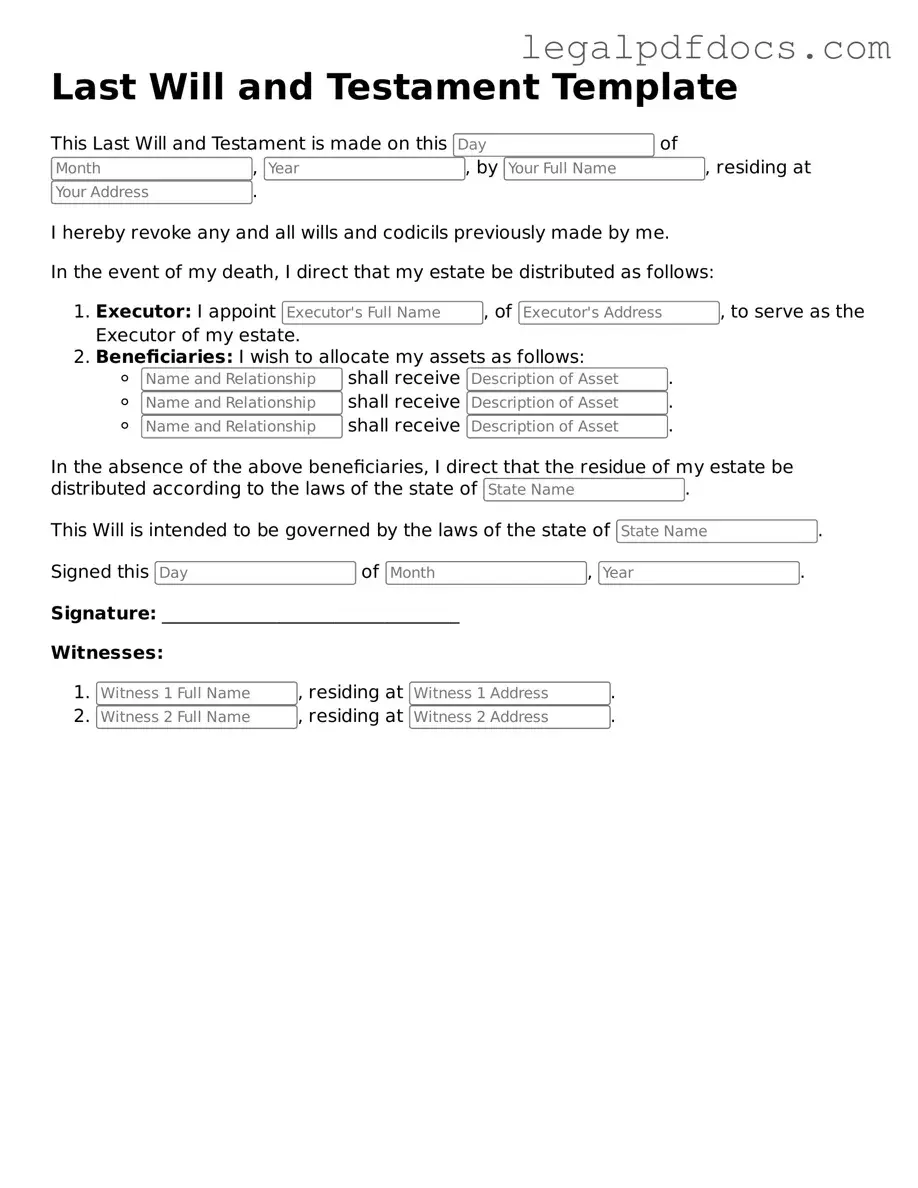The Last Will and Testament form is a crucial legal document that allows individuals to outline their wishes regarding the distribution of their assets after their death. This form serves multiple purposes, including the appointment of an executor, who will be responsible for managing the estate and ensuring that the decedent's wishes are carried out. Additionally, the will can designate guardians for minor children, providing peace of mind for parents concerned about their children's future. It also allows individuals to specify particular bequests, ensuring that sentimental items or specific assets go to designated beneficiaries. Furthermore, a well-crafted will can help minimize disputes among family members and streamline the probate process, making it easier for loved ones to navigate the complexities of estate administration. Understanding the components of this form, including the necessary signatures and witnessing requirements, is essential for anyone looking to create a legally binding document that reflects their final wishes.
